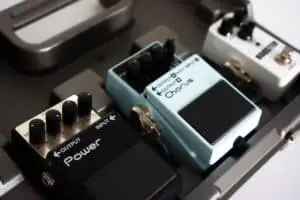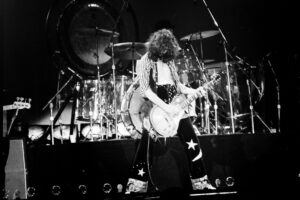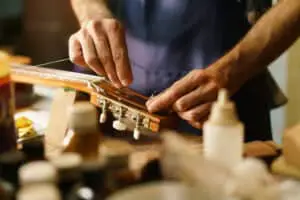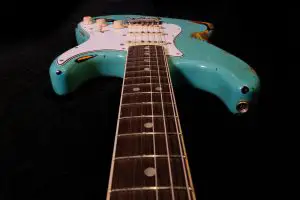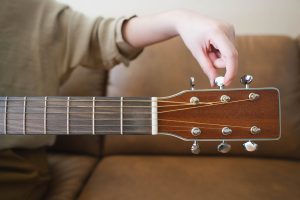
You would be surprised how many guitar players (even the intermediate ones) don’t REALLY know what guitar knobs do…
If you see yourself among that bunch, no worries. I got your back!
Guitar “knobage” is among some of the most expressive features of your guitar, and I’m going to help you understand it both theoretically and practically.
In short, guitar knobs:
- Decrease or increase the total output of your guitar.
- They shape your guitar tone frequency-wise.
- More advanced knobs allow you to switch between different pickup modes.
- Profit?
2010-esque cringe-worthy memes aside, I’m going to take you through all the tonal capabilities that your knobs can give you. Also, you will learn about different types of circuitry that run your guitar knobs.
What are the Different Types of Guitar Knobs?
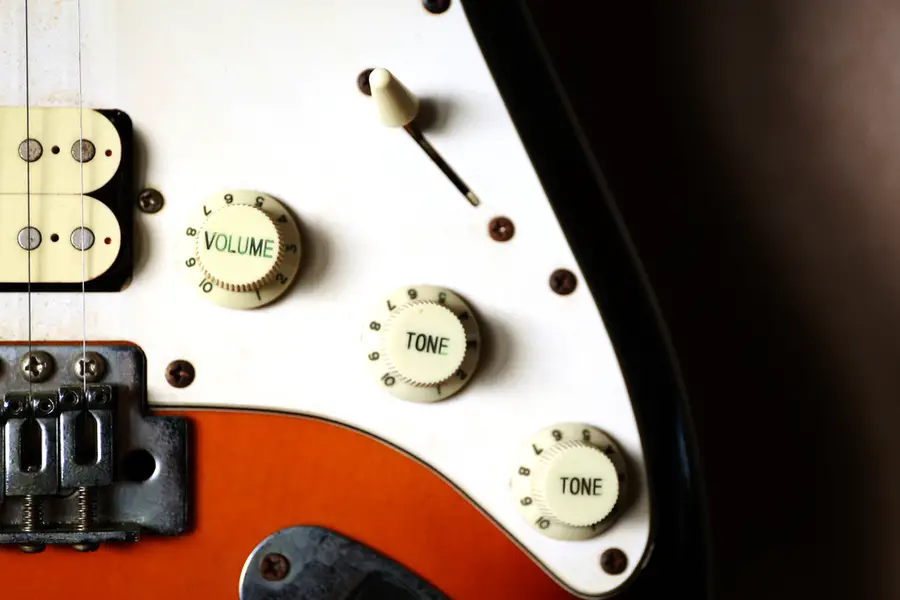
First, let’s take a closer look at the different kinds of guitar knobs and the functions they serve.
Volume knobs
The main use of the guitar volume knob is to control the output of your guitar. In other words, it affects the loudness of your guitar signal. Hence the name “volume knob,” duh?
Having said that, I must mention some of the more creative ways of using it. A lot of legendary guitarists (Jimi Hendrix, for example) used the volume knob to shape their tone further.
By decreasing your output, you can create a warmer and less distorted sound. It is a great way to achieve some smooth distortion-overdrive-clean transitions, especially if you don’t have a footswitch!
You should know that volume knobs usually come in 250k or 500k Ohm variants. Humbucking guitars tend to feature 500k knobs so that they can compensate for some high frequency due to their darker timbre. Whereas single-coil guitars usually feature 250k pots.
If you are Ritchie Blackmore, the same may not apply. Wink, wink.
Tone Knobs
Now, this is where things get really interesting! Guitar sound fanatics rejoice!
The main purpose of tone knobs is to control the amount of high frequencies emanating from your beloved axe. If you roll back your tone knob, you will filter out the high frequencies. Whereas if you put it to the max, you will be getting a full treble response from your guitar. Makes sense?
Now, let’s complicate things just a tad bit…
In essence, tone knobs are potentiometers that work as low-pass filters. By turning it, you are affecting the resistance. That results in lowering the cut-off frequency. You can almost think of it as a next-of-kin of the wah-wah pedal. Without the frequency boosting properties, ofc.
Tone knobs open up a whole new pool of sonic capabilities. Some of the textures you can achieve with these babies are a joy to behold!
Different Knob Configurations
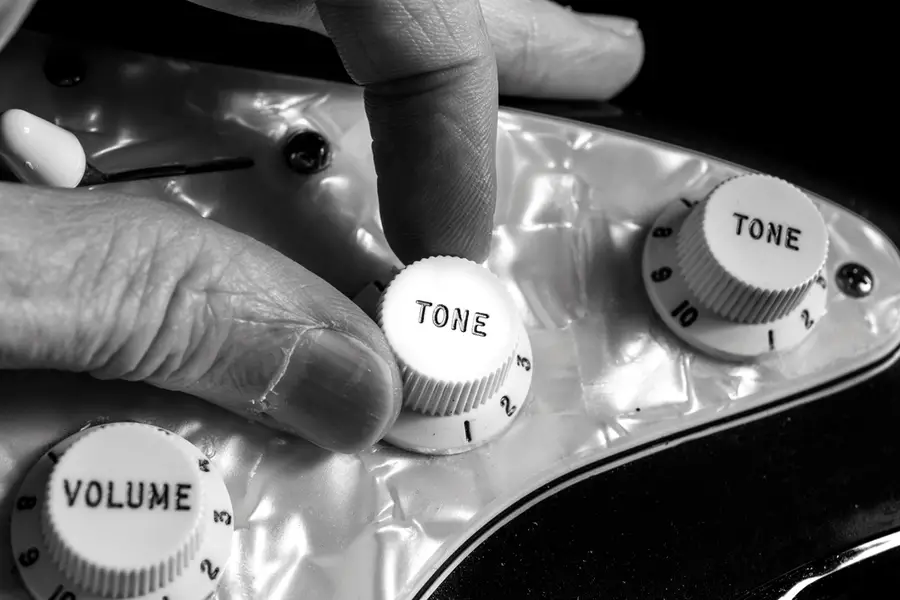
Depending on the guitar model, you are almost sure to get one of the following three combos:
- One volume knob, two tone knobs (e.g., Fender Stratocaster)
- Two volume knobs, two tone knobs (e.g., Gibson Les Paul)
- One volume knob, one tone knob (e.g., Many Jackson models)
Knob Circuitry Geekdom
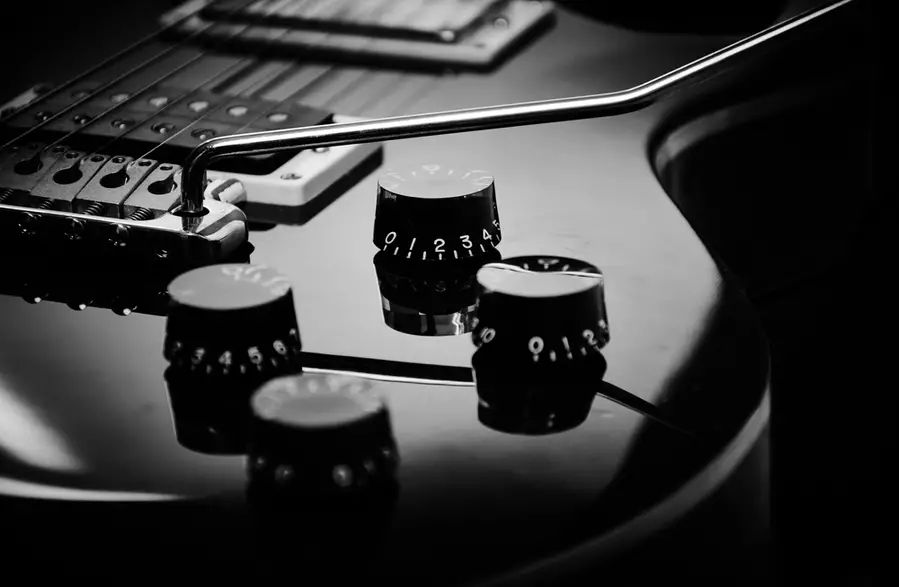
Not for the faint-hearted! However, if you consider yourself to be a brave young axeman, make sure to read on!
Master vs. Isolated controlled
The master-controlled knobs affect all of the pickups of the guitar at the same time. They can be both tone and volume knobs. One of the more prominent examples is the Gibson Les Paul model. The way it works is that it serves all of your pickups with the same signal.
The isolated, controlled variant is crucial in a situation in which you want to treat your pickup feed differently. For example, the tone knobs on a Strat work that way (mostly). One tone knob affects only one of the pickups. Whereas the other tone knob serves the other pickup. This way, you are sure to be getting some adventurous soundscapes.
Now, you may wonder, which is better?
Well, it’s a matter of personal taste and needs. Being a Strat guy, I’m all for the isolated controls.
However, that can be a bit of a turn-off if you want all of your pickups to be treated the same.
On the other hand, the master-controlled pots can make your tonal possibilities somewhat limited.
I don’t know, make your own mind up!
Audio taper vs. Linear taper
The easiest way to determine the type of pots you have is to flip them over and see what it says. If it is marked with “A,” that means that you’ve got yourself a nice audio taper pot (luckily for you, I’m not a biased Strat fanatic)!
If your knob is marked with “B,” it tells you that you have a linear taper knob.
As I have hinted above, the guys at Fender use audio taper knobs for both volume and tone knobs. Guys and gals at Gibson use the linear taper pots for volume and tone knobs.
Ok, so let’s say you have a 500k Ohm knob…If it is a linear knob, it goes from 0 Ohms to 500k Ohms. The ohmage is distributed evenly, which means if you turn your knob to 5, you will get a 250k Ohm signal.
The problem is that it can sound a bit unnatural to our ears since we don’t perceive the sound linearly.
Therefore, although less precise, the audio taper knobs are designed to deceive our ears into what they want to hear. In this case, it is hearing the volume change more precisely.
Take a Walk on the Wild Side
Lastly, let’s mention some of the guitar knob bonanzas!
Push-pull
This variant makes your knob behave differently when it’s raised or pushed down. (This is getting seriously sexual, don’t you think?).
For example, some guitars have the option to make the humbucker work like a single coil. By changing the position of your knob, you can achieve that desired effect.
Also, some of the push-pull pots allow you to change both volume and tone with the same knob. In the pull position, you would be affecting the tone, and in the push position, you can change the volume.
Killswitch
The killswitch literally turns on and off your signal. If you have it, you can really make some interesting effects with it!
Curtains
All in all, guitar knobs serve to affect the loudness of your guitar, shape the tone, and create some exotic effects. We have given you the knowledge you need, so…Go and fly my beautiful butterflies! (Hey, I can call you Knobby… I’m also a comedy genius, I know.)


